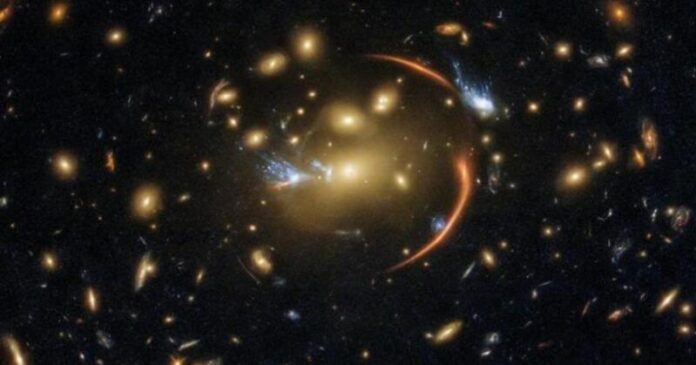The Hubble telescope has spotted the most distant star it has ever recorded, at a record 28 billion light years away. The star has been nicknamed Earendel, the old English word for ‘morning star’. According to astronomers not only is this the most distant star ever seen, but it is also humongous. The team estimates the star is 50 to 500 times the size of our sun- and millions of times brighter.
The previous record holder for the most distant star captured was Icarus. This star is 9 billion light years away from Earth. Put into context, the only stars we see in the night sky belong to our galaxy, The Milky Way. Within our own galaxy it is estimated that there are between 100 billion and 400 billion stars. The furthest star discovered in our galaxy is 900,000 light years. This makes Earendel is over 30,000 times further away.
Earendel first appeared in space 12.9 billion years ago, just 900 million years after the Big Bang. This makes it one of the oldest stars in space- formed when the universe was only 6% of its current age. In the 12.9 billion years since Earendel was formed the star has become further away from us due to expansion of the universe.
If you’re wondering how our telescopes could detect a star 28 billion light years away, you would not be alone. As advanced as The Hubble telescope is, it is in fact a natural phenomenon that enabled astronomers to detect Earendel. This phenomenon is known as gravitational lensing which Albert Einstein predicted in his General Theory of Relativity. Gravitational lensing makes distant objects seem closer, when their light has to bend and travel around the gravity emited by large objects in space. When Earendel was spotted, gravitational lensing was caused by the star’s light being magnified by the gravity of a cluster of galaxies. Thanks to this well-timed alignment of the stars, Earendel appeared thousands of times larger than it normally would.
Because of its age and size, the massive star is most likely long gone, according to Brian Welch, the PhD student at John Hopkins University who discovered the star.
“Given its mass, it almost certainly has not survived to today, as more massive stars tend to burn through their fuel faster and thus explode, or collapse into black holes sooner.”

